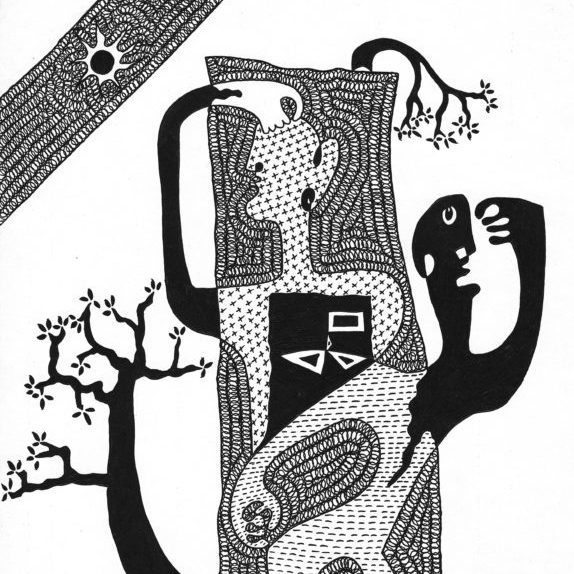
This article comes from the spring 2017 edition of the Nonprofit Quarterly, which addresses ways of thinking differently about a variety of issues affecting the sector.
Editors’ note: This article is part of our ongoing Equity, Diversity, and Inclusion (EDI) Project. Visit www.dev-npq-site.pantheonsite.io to access additional articles from this series.
It would be an understatement to say that the past few months have been uncomfortable. The national election was downright ugly, and it exposed just how naïve those pundits were who “dared ask whether the United States had finally begun to heal its divisions over race” after President Obama was elected.1 The resistance that has sprung up in response to the new administration has also been fraught—apparent, most notably, in the tensions over race and feminism that were sparked in the lead-up to the Women’s March on Washington, in January.2 The critiques and dissent may have hurt some feelings but the march was an undeniable success, drawing historic crowds to the nation’s capital and highlighting the leadership of the four cochairwomen—one Black, one Latina, one Muslim and Arab American, and one white. Nonprofit leaders should get ready for additional uncomfortable conversations over the next years and accept that conflict will be necessary for progress.
The diverse leadership of the Women’s March was so notable because studies and surveys repeatedly show that people of color are underrepresented in CEO3 and board4 roles in the nonprofit sector. In preparation to launch our own national survey on nonprofits, leadership, and race last year, my codirector, Frances Kunreuther, and I conducted more than thirty interviews with other experts in the nonprofit sector about what we’re calling the “nonprofit racial leadership gap.” The basic question we asked is, “Why haven’t we moved the dial on diversity?” The answers to that question varied widely and are far from conclusive, but without fail the most interesting conversations were with people who had personal experiences to get off their chests. Similarly, among the more than four thousand survey responses from nonprofit staff across the country, some of the richest data came from the hundreds of individuals who answered an open-ended question about how their race/ethnicity had negatively impacted their career advancement.5 Knowing that discrimination still exists is one thing, but listening to and reading personal stories reveals that racial dynamics are as tense in our organizations as they are in our national politics.
The stories of racism that our interviewees and survey respondents described having confronted in nonprofit workplaces are not isolated incidents. In fact, they reflect clear trends documented by other surveys, focus groups, and high-profile cases over the last few years. In a 2010 survey by Commongood Careers of employees of nonprofits, more than a quarter of the respondents of color reported having left a job “due to lack of diversity and inclusiveness.”6 Similarly, a 2014 report from A Philanthropic Partnership for Black Communities (ABFE), based on focus groups and interviews with Black professionals in philanthropy, found that when asked why Black practitioners leave the field of grantmaking, roughly one-fifth gave “being pushed out” of philanthropy as the reason for leaving, and two in five indicated that isolation was a cause for leaving foundation jobs.7 In 2015, an internal memo on diversity issues in one of the country’s biggest and most powerful LGBTQ organizations was leaked to the press, shedding light on what “minority” staff (people of color, women, and transgender staff) had characterized as a “White Men’s Club” environment inside of the organization.8 All across the sector, working day to day in racially hostile, isolating, and oblivious environments is taking a toll on nonprofit staff of color and causing staff turnover and recruitment problems. This is a crisis for the sector, especially knowing that it needs to be diversifying its staff and leadership to better reach, reflect, and advocate for constituents who often are people of color.
But despite the evidence that systems and structures are leading to the isolation of people of color in nonprofit organizations, there still seems to be a hesitance to talk explicitly about racism in the sector. I bring up racism specifically, because talking about race in the abstract has proved insufficient. Appreciating racial, ethnic, and cultural differences is great, but too often that is the extent of multicultural work done in the nonprofit sector.
A 2012 study looking at how rationales for organizational change shape multicultural development in nonprofits found that when organizations undertake multicultural initiatives to be responsive to their client base (the top rationale given), the interventions they tend to choose focus on cultural competency, awareness, and sensitivity.9 This responsiveness rationale probably reflects “cultural competency” finally catching on after two decades of practitioners, consultants, and academics trying to make it a best practice in the sector. By contrast, one of the rarer reasons that organizations took on multicultural programs was to “dismantle white/dominant culture.”10 But this was the only rationale (out of eleven) that led to organizations developing career ladder programs and mentoring programs to create opportunities for staff of color. Doing this much deeper multicultural work requires a commitment to “fundamental organizational transformation”11—a commitment that seems too rare in the sector.
If nonprofits are finally going to tackle how racial oppression shows up inside of organizations, they must be willing to be explicit about tackling the dominant white culture that compels people of color to “cover” or downplay their authentic identities at work. A decade ago, Kenji Yoshino’s book on “covering” explained how coerced conformity and assimilation constituted the new assault on our civil rights, especially in an era when overt racism had been forced to simmer below the surface.12 Yoshino’s own personal reflections—as a gay Asian-American man who identified with certain aspects of dominant culture—also showed how complicated and nuanced the experience of racial oppression has become in multicultural America.
Sign up for our free newsletters
Subscribe to NPQ's newsletters to have our top stories delivered directly to your inbox.
By signing up, you agree to our privacy policy and terms of use, and to receive messages from NPQ and our partners.
One of the profiles in the Commongood Careers report parallels Yoshino’s notion of “reverse-covering”—that is, demands on people to act in stereotyped ways. The report profiles an African-American woman who recounted being asked questions about her background—such as growing up in the inner city and being a single mother—that didn’t seem relevant to the job she was applying for.13 Those questions only made sense once the interviewer told her that she would “be able to relate to students in the program.” To be sure, being able to relate to program participants should be seen as an asset, not as an unfair or negative assumption; but regardless of the interviewer’s positive—though apparently clumsy—intention to affirm the relevance of lived experience in the context of the job, being stereotyped still doesn’t feel good. The tendency of nonprofits to tokenize people of color may get new staff in the door, but it doesn’t lead to staff retention. And when this kind of racially charged environment becomes too uncomfortable, people would rather not rock the boat, and they wind up jumping ship and leaving their job or the sector entirely.
As a nation, our racial waters seem to be getting rougher. Polls show that people are alarmed that race relations are worse than in years before.14 But history and recent movements show that the discord is probably necessary. Creating real opportunities to address America’s continuing racial inequality and oppression is going to require conflict. Half a century ago, Martin Luther King Jr. explained the concept of “creative tension” to defend against criticisms of the protests and demonstrations of the day.15 It is worth remembering that King’s critics were friends and supporters of civil rights; they just wanted activists to wait rather than push so aggressively for change. And if the nonprofit sector is going to grow and evolve to fully embrace the leadership of diverse staff, change agents inside of organizations will need to follow their lead, despite appeals from colleagues to be patient and polite.
Under President Obama, activists constantly had to grapple with the urgency to push for change while facing appeals from supposed/professed “allies” to be quiet. From the grassroots activists who heckled the president at media events to the nonprofit leaders who got arrested in front of the White House, both the LGBTQ and the immigrant rights movements used the same tactics the president had learned from his own years as a community organizer.16 With the emergence of the Black Lives Matter movement during President Obama’s second term, there was renewed debate about activists’ disruptive tactics targeting allies. Also, with their hoodies, T-shirts, and encouragement to supporters to be “unapologetically Black,” the young activists refuse to “cover” and play into respectability politics. This revived spirit of activism is now in full swing in response to the current administration in Washington, so we can all expect the political debates to continue to get more heated and contentious.
Just as nonprofits should embrace a more confrontational and overt style of advocacy and activism in their public fights over our nation’s policy and politics, they must also prepare for a similar style of conflict and “creative tension” inside of the workplace. Any organization that is mission driven is going to have highly principled staff working to achieve social change in the world. So, when our own organizations fall short of our professed values of diversity and inclusion, we should expect staff to fight for progress internally with the same zeal that we call attention to injustice and inequity in the wider world. But, too often, leaders seem to regard critiques related to the lack of internal staff diversity as signs of disloyalty.
When staff take the personal risk to speak up about barriers to advancement, implicit biases playing out in hiring decisions, and experiences of tokenism, they are only bringing the discomfort and tension that exists within organizations to the surface. The ability of decision makers to hear that their organizations are not living up to their ideals is a crucial leadership capacity, and internal assessments of organizational climate are a powerful tool for starting the kind of honest discussions that are needed to make change. My organization developed a question on the racial match or mismatch between organizational leaders and clients/constituents for initial assessments we recently did with a cohort of organizations in Albuquerque.17 When directors saw the data on how their staff perceived their leadership—particularly boards—to be mostly different from their constituents, it was met with some discomfort but also sparked necessary conversations. Now those organizations are learning together about strategies to diversify their boards and prepare both clients and board members to communicate directly with each other.
Facing the reality of race and racism inside nonprofit organizations is a necessary first step to making progress and making change. If we truly are going to diversify the leadership of organizations, people in positions of power will not be able to avoid feeling uncomfortable. Making progress on any tough issue at the intersection of social biases, policies, and structures and our nation’s legacy of racism requires some discomfort; it’s how we know things are changing.
Notes
- Kevin Sack and Megan Thee-Brenan, “Poll Finds Most in U.S. Hold Dim View of Race Relations,” New York Times, July 23, 2015.
- Farah Stockman, “Women’s March on Washington Opens Contentious Dialogues About Race,” New York Times, January 9, 2017.
- For instance, the “Daring to Lead” surveys found that in both 2006 and 2011 (the most recent years of survey data), 82 percent of EDs in their sample were white. See Jeanne Bell, Richard Moyers, and Timothy Wolfred, Daring to Lead 2006: A National Study of Nonprofit Executive Leadership (San Francisco: CompassPoint Nonprofit Services and the Meyer Foundation, 2006), 28; and Marla Cornelius, Rick Moyers, and Jeanne Bell, Daring to Lead 2011: A National Study of Nonprofit Executive Leadership (San Francisco: CompassPoint Nonprofit Services and the Meyer Foundation, 2011). Detailed “Demographics & Salary” charts for the 2011 study are available at daringtolead.org.
- Francie Ostrower, Nonprofit Governance in the United States: Findings on Performance and Accountability from the First National Representative Study (Washington, DC: Urban Institute, 2007), 18.
- Noelia Mann, “The #BMPRaceSurvey Closes with Over 4,000 Responses,” Building Movement Project blog, July 2016.
- Robert Schwartz et al., The Voice of Nonprofit Talent: Perceptions of Diversity in the Workplace (Boston/San Francisco: Commongood Careers and Level Playing Field Institute, 2011), 11.
- LM Strategies, The Exit Interview: Perceptions on why Black professionals leave grantmaking institutions (New York: ABFE, A Philanthropic Partnership for Black Communities, 2014), 9.
- Chris Geidner, “Internal Report: Major Diversity, Organizational Problems At Human Rights Campaign,” BuzzFeed News, June 3, 2015.
- Cheryl A. Hyde, “Organizational Change Rationales: Exploring Reasons for Multicultural Development in Human Service Agencies,” Administration in Social Work 36, no. 5 (October 2012): 436–56.
- Ibid., 442.
- Ibid., 452.
- Kenji Yoshino, Covering: The Hidden Assault on Our Civil Rights (New York: Random House, 2006).
- Schwartz et al., The Voice of Nonprofit Talent, 9.
- See Sack and Thee-Brenan, “Poll Finds Most in U.S. Hold Dim View of Race Relations”; William Douglas and Donovan Harrell, “Poll finds bleak outlook for race relations,” San Francisco Chronicle, March 6, 2017; and Shiva Maniam, “Many voters, especially blacks, expect race relations to worsen following Trump’s election,” Fact Tank: News in the Numbers blog, Pew Research Center, November 21, 2016.
- Martin Luther King Jr., “Letter From a Birmingham Jail,” April 16, 1963, The Martin Luther King, Jr., Research and Education Institute.
- Peter Wallsten, “President Obama bristles when he is the target of activist tactics he once used,” June 10, 2012, Washington Post.
- Alicia Lueras Maldonado and Leah Steimel, “The ‘Common Good’ in Action,” Building Movement Project blog, March 2017, 2017.












